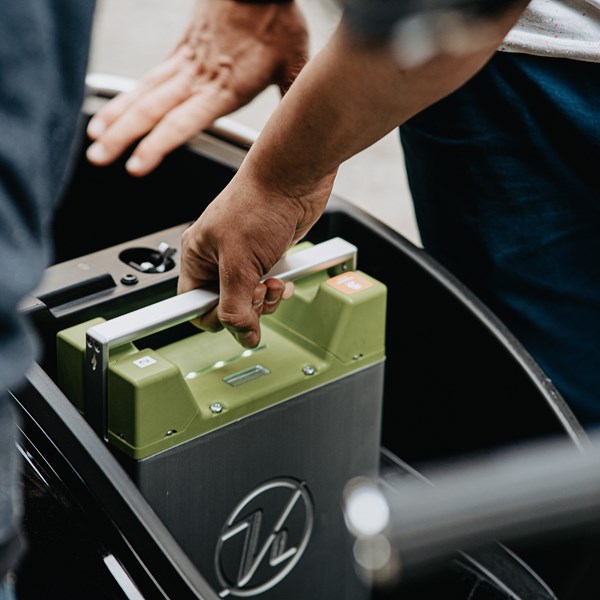On 13 May 2024, the UPC Court of Appeal (CoA) upheld a decision of the Munich Local Division (MLD), primarily directed to the approach to claim construction. This was in the context of a preliminary injunction application brought by the patentee, which was dismissed at first instance and on appeal. In its decision, the CoA did not, however, address whether or not the file wrapper could be referred to in order to assist in interpreting patent claims in the UPC.
File wrapper estoppel allows a court to consider the statements or amendments made by the applicant during prosecution when interpreting the scope of patent claims during later infringement or invalidity proceedings. This approach is commonly applied in some territories, including, most notably, the US. However, whether it will be applied in the UPC remains an open question.
BACKGROUND
The patent in issue, EP3883277 (Patent), relates to an electronic labelling system providing pricing information in a sales area.
VusionGroup SA (Applicant and Appellant) applied for a preliminary injunction against the Hanshow group of entities (Respondents), claiming that the Respondents’ electronic labels infringed the Patent. The Respondents argued in turn that their labels did not fall within the scope of the claims of the Patent.
The dispute centred on how claim 1 of the Patent, which defines the location of the components within the electronic label, should be interpreted. Specifically, the parties had different views on the positioning of the printed circuit board in relation to an antenna and electronic chip.
Claim 1 specified the arrangement of these components as follows:
- printed circuit board housed in the case on the side of the back of the housing;
- electronic chip of the radio frequency device being located on the printed circuit board; and
- antenna of the radio frequency device being located on or in the housing on the side of the front of said electronic label.
In a substantive order dated 20 December 2023, the application for provisional measures was dismissed by the MLD. Interestingly, in its decision, the MLD relied on the prosecution history and particularly on the claims as filed (in order to compare them to the claims as granted).
Claim 1 originally defined the printed circuit board and the antenna as “at a distance” from each other. During the prosecution of the Patent, this wording was then replaced with statements that the printed circuit board is “on the side of the back” and the antenna is “on the side of the front”. The MLD noted that these components should have the same technical purpose of limiting interference. For this reason, the MLD concluded that the whole antenna must be located on the front side of the case, and the whole of the printed circuit board must be placed on the back side.
As a substantial part of the antenna in the Respondents’ label rested on the back side of the case, the MLD ruled that their label did not infringe the Patent.
The Appellant subsequently lodged an appeal against the MLD’s decision, submitting that the MLD erred in its construction of claim 1 and therefore was incorrect to determine that the Respondents’ products fell outside the scope of the Patent. The Appellant contended that claim 1 does not require a specific distance between the printed circuit board and the antenna, and that the skilled person would only deduce that the antenna is to be arranged in such a way that, as seen from the direction of the front of the label, it is not positioned behind the printed circuit board.
Importantly, the Appellant also argued that the MLD inadmissibly used the prosecution history of the Patent as an aid to interpret the claim. It further argued that, even if it was permissible to refer to the prosecution file for this purpose, this would confirm that the antenna should be positioned separate from the chip arranged on the printed circuit board only to the extent that transmission through the circuit board is avoided.
The Respondents defended the finding of the MLD, arguing that their products fell outside the scope of the Patent and maintaining the other objections that they submitted in the first instance proceedings.
CoA DECISION
The CoA usefully summarised the principles to claim construction previously advanced by it in 10X Genomics v Nanostring1 in accordance with Article 69 of the EPC (see summary of the decision here). In short:
- The patent claim is not only the starting point, but the decisive basis, for determining the protective scope of a European patent.
- The description and the drawings contained in the patent specification must always be used as explanatory aids for the interpretation of the patent claim, and not only to resolve any ambiguities in the patent claim.
- However, this does not mean that the patent claim serves only as a guideline and that its subject-matter may extend to what, from a consideration of the description and drawings, the patent proprietor has contemplated.
- The patent claim is to be interpreted from the point of view of a person skilled in the art.
- In applying these principles, the aim is to balance providing adequate protection for the patentee with sufficient legal certainty for third parties.
- These principles for the interpretation of a patent claim apply equally to the assessment of the infringement and the validity of a patent.
With these principles in mind, the CoA went on to interpret the claim, relying also on the description of the Patent.
The CoA concluded that the person skilled in the art would understand that, in combination, the claim features require that the antenna is positioned on or in the case at a location more to the front of the electronic label than the printed circuit board with the electronic chip on it. The CoA rejected the Appellant’s argument that the claim only requires that the antenna is not placed behind the printed circuit board.
Interestingly, the CoA’s interpretation of claim 1 was based on the wording of the claim, read in the light of the description and drawings (from the perspective of the skilled person based on their common general knowledge), and without having regard to the prosecution history of the Patent. The CoA was of the view that the parts of the EPO file cited by the parties did not shed any light on this interpretation. Therefore, it circumvented the need to address the question of whether the prosecution history can be considered in the UPC to assist with determining the scope of protection of claims and did not comment any further on it.
With respect to assessing infringement in the context of a preliminary injunction application, the CoA referred again to its decision in 10X Genomics v Nanostring, which established that a “sufficient degree of certainty”2 requires the Court to consider whether on the balance of probabilities, it is at least more likely than not that the Patent is infringed.
Applying this standard, the CoA ruled that, on the basis of the submissions of the parties and analysis above, there is not a sufficient degree of certainty that the Respondents have infringed the Patent with respect to the contested products.
COMMENTARY
Whilst affirming the general principles set out in 10X Genomics v Nanostring, the question of whether or not parties will be permitted to rely on the prosecution file as an aid to claim construction in the UPC remains unanswered. Neither Article 69 of the EPC nor any of the UPC rules expressly state that prosecution history may be considered when interpreting claims. The UPC Agreement provides, however, that the UPC can base its decisions on national law.3
Absent any harmonisation from the CoA, it can be expected that local divisions will continue to take divergent approaches in relation to this, in line with their national practice, thus resulting in a lack of uniformity across the UPC. For instance, the Dusseldorf Local Division4 contended earlier this year that, in principle, the prosecution file should not influence the interpretation of patent claims, which contrasts with the MLD’s ruling.
There also appears to be no obligation on the UPC to indicate the source of law underlying their reference (or not) to the file wrapper. Notably, the MLD’s decision to consider prosecution history might be attributed to the fact that the judge was Dutch and had prior experience practising in the Netherlands, where this approach to claim construction is well-established. However, whether the judge was relying on Dutch law was not expressly stated in the decision.
In contrast, many of the European courts, including Germany where the MLD’s decision was heard, do not generally apply the file wrapper estoppel. Whilst of course the UK is not a contracting member state to the UPC, it is interesting to note that the UK Supreme Court in Actavis v Eli Lilly5 introduced a limited version of file wrapper estoppel, establishing that reference to prosecution history would only be appropriate where:
- the point of construction was “truly unclear” but the contents of the prosecution file “unambiguously resolve the point”; or
- it would be “contrary to the public interest for the contents of the file to be ignored”.
Overall, the current lack of harmonisation in areas such as file wrapper estoppel may encourage parties operating across Europe to select the local division which they consider may increase their prospects of obtaining a favourable decision. However, it is worth noting that a judge’s nationality could introduce uncertainty to forum shopping, as the parties have no say in which judges are assigned to the case.
As first instance courts in the UPC will be increasingly required to deal with claim construction as cases begin to reach trial, we expect to continue to see a “flavour” of national law on this issue, pending more clarity from the CoA.
REFERENCES
- 10X Genomics v Nanostring (UPC_CoA_335/2023 App_576355/2023)
- Within the meaning of Rule 211.2 of the UPC Rules of Procedure, in conjunction with Art. 62(4) UPCA
- National law is stated as one of the sources of law according to Article 24 UPCA
- Ortovox v Mammut (UPC_CFI_452/2023)
- Actavis v Eli Lilly [2017] UKSC 48 (12 July 2017)






